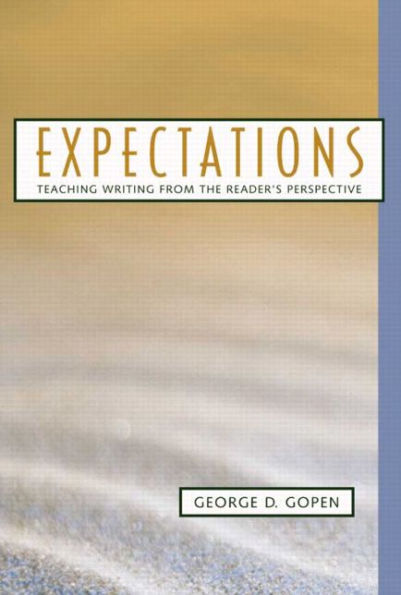Expectations: Teaching Writing from the Reader's Perspective / Edition 1
By exploring and explaining the perceptive patterns that readers of English follow in their interpretive process, this rhetoric approaches the task of teaching writing from the perspective of readers. As a result, students learn how to write with conscious knowledge of reader's expectations. Gopen Expect SMP 3.16.03 rev.doc Page 1 of 1
1101357127
Expectations: Teaching Writing from the Reader's Perspective / Edition 1
By exploring and explaining the perceptive patterns that readers of English follow in their interpretive process, this rhetoric approaches the task of teaching writing from the perspective of readers. As a result, students learn how to write with conscious knowledge of reader's expectations. Gopen Expect SMP 3.16.03 rev.doc Page 1 of 1
230.52
In Stock
5
1

Expectations: Teaching Writing from the Reader's Perspective / Edition 1
416
Expectations: Teaching Writing from the Reader's Perspective / Edition 1
416Paperback(New Edition)
$230.52
230.52
In Stock

Product Details
| ISBN-13: | 9780205296170 |
|---|---|
| Publisher: | Pearson Education |
| Publication date: | 01/07/2004 |
| Edition description: | New Edition |
| Pages: | 416 |
| Product dimensions: | 232.28(w) x 350.39(h) x 39.37(d) |
From the B&N Reads Blog
